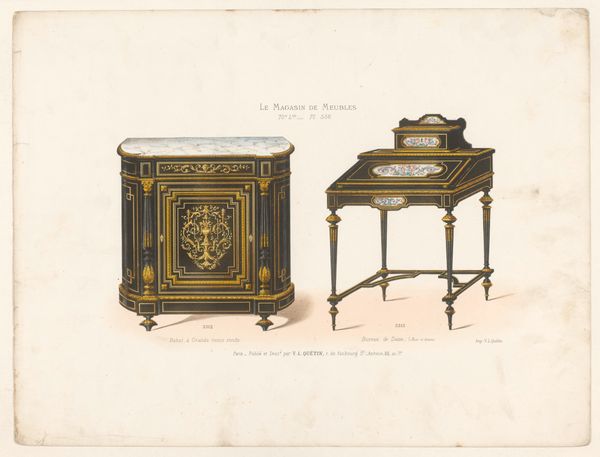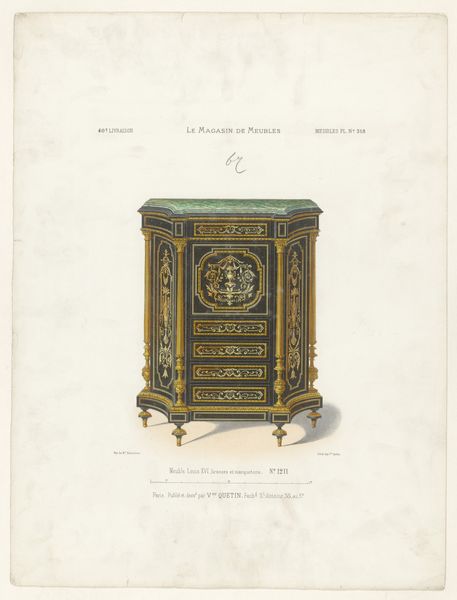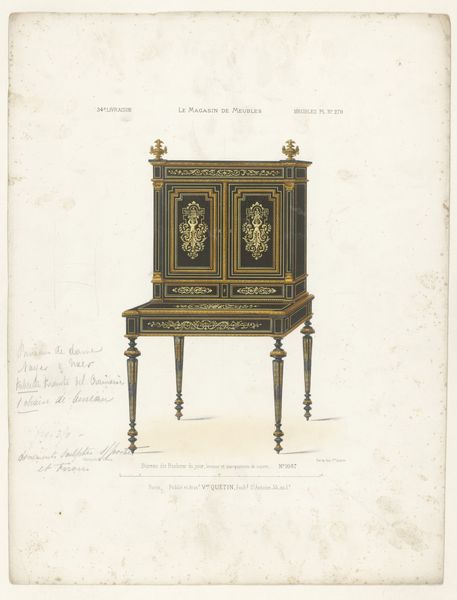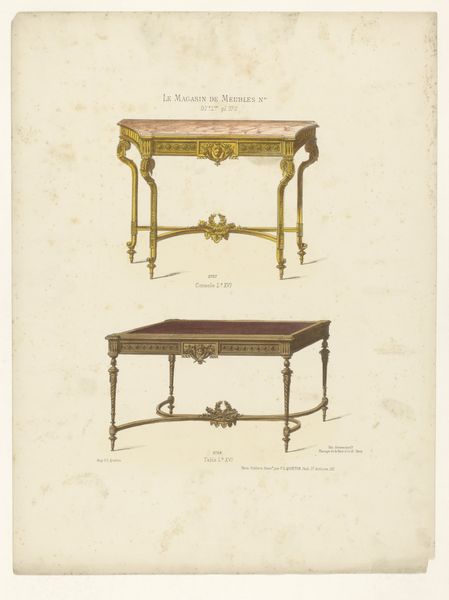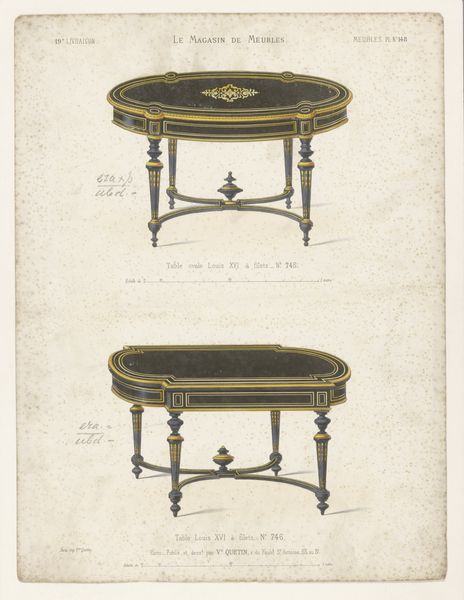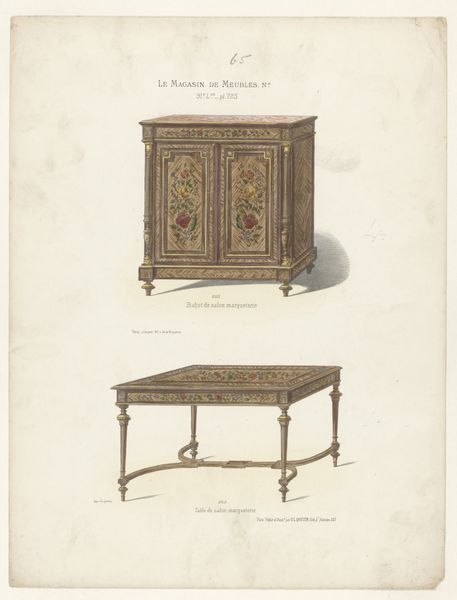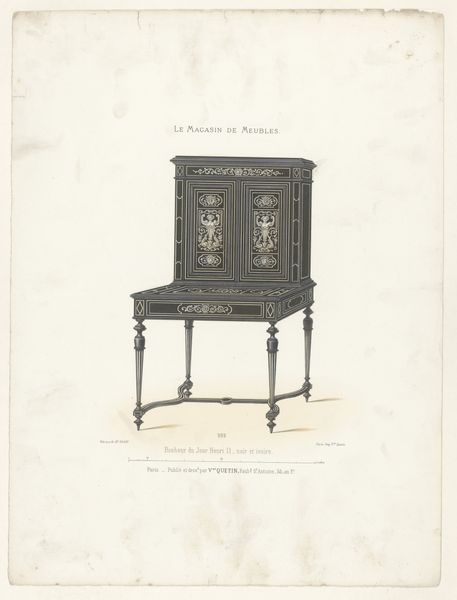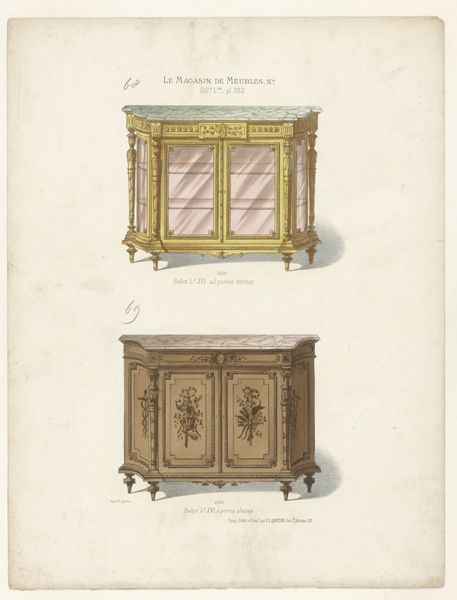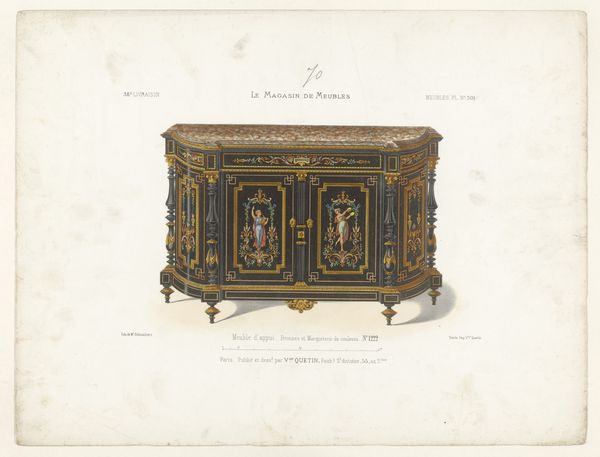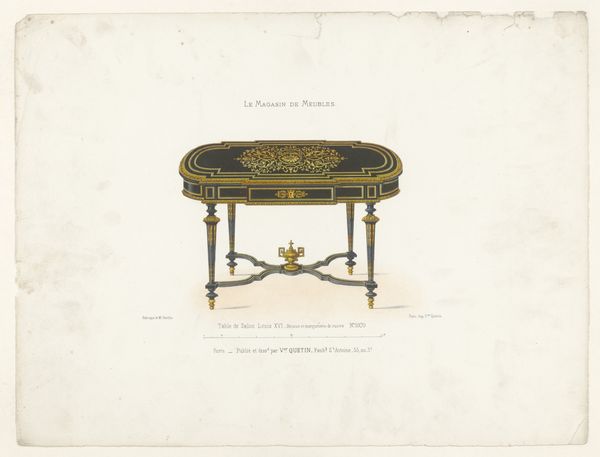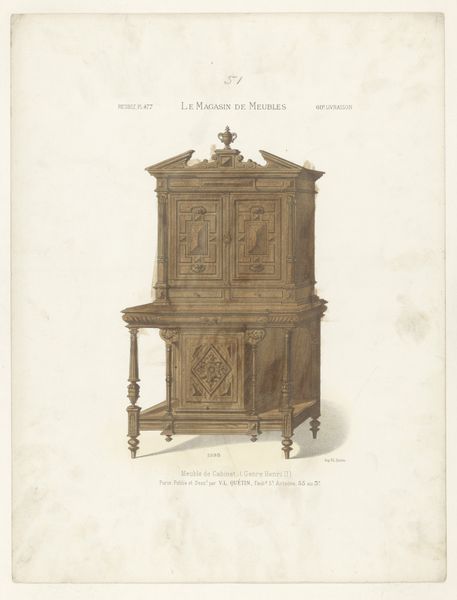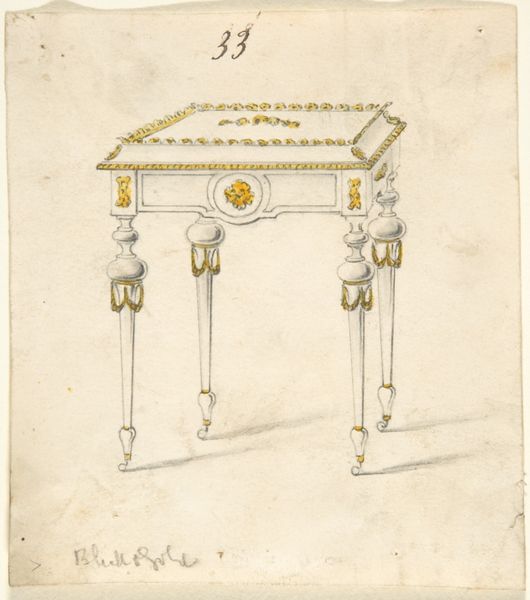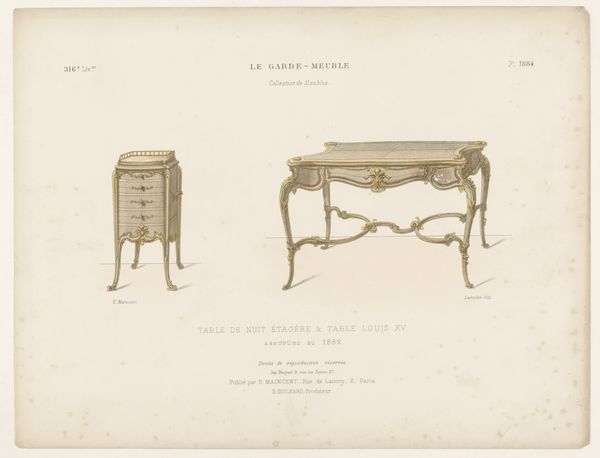
Dimensions: height 359 mm, width 271 mm
Copyright: Rijks Museum: Open Domain
Curator: I'm struck by the opulence of this print, “Kast en tafel.” There's a distinct emphasis on line and form typical of decorative art from this period, likely meant for an artisan's catalogue. Editor: My immediate impression is the incredible detail in the engraved ornamentation—especially the gilded elements that contrast with the darker wood or paint. You can almost feel the weight of that marble top. Curator: Indeed, let's dive a little deeper. This graphic piece, from the mid-19th century, showcases two pieces of furniture—a cabinet and a table. Both are rendered with meticulous detail, reflective of Baroque sensibilities, with what appear to be later additions in a revival style. What do you see in terms of their materiality and likely means of production? Editor: I think it's fascinating how this print offers us insight into 19th-century modes of design dissemination. These furniture pieces, designed with obviously luxurious materials, like the bronze gilding and costly stones on the cabinet, become accessible to a wider audience via print culture. The engraving serves as a kind of mass reproduction of high art craft. Curator: Precisely! It is less about the historical events depicted and more about the cultural and economic forces at play. The piece was, most likely, a tool in popularizing Louis the 14th designs for consumers, using print as a method to increase sales in a competitive industry. What strikes you about that aspect? Editor: That reading certainly places these objects within the broader context of commodity culture. Furniture, initially associated with aristocratic taste and patronage, begins its journey toward a democratized consumer market via the means of prints like this. The political and cultural value begins to change as distribution expands, doesn’t it? Curator: Absolutely, with “Kast en tafel” the design ideas move into public sphere, available not only to nobility, which historically were its intended consumers, but rather an aspiring bourgeois that gained power throughout the 19th century, eager to display the same social power by means of mere acquisition and consumption. Editor: Thinking about it that way makes this print almost a blueprint for a societal shift in taste. Looking beyond the individual objects, we can also examine this image’s role in the larger theater of image making. Curator: It truly serves as a time capsule—preserving not just forms but an entire framework of economic ambition and design communication of that specific time and social conditions. Editor: An excellent way to view this intriguing intersection of design and distribution.
Comments
No comments
Be the first to comment and join the conversation on the ultimate creative platform.
